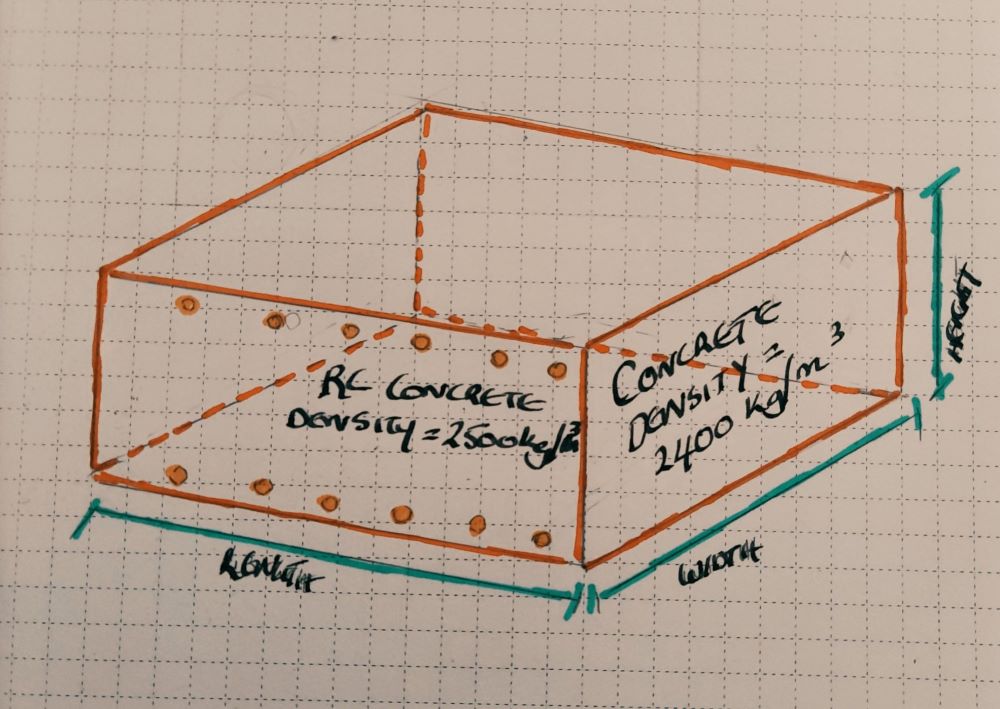Concrete Properties
Table of Contents
What is Concrete Density and Unit Bulk Weight?
Concrete density or bulk density or unit weight of concrete is the mass or weight of concrete that is required to fill a container of specified unit volume and is defined in the equation below:
\(Bulk density = \frac{Mass}{Volume} in kg/m^3\)
Concrete density is defined below:
- The density of concrete is 2400 kg/m3
- The density of wet concrete is 2600 kg/m3
- The density of reinforced concrete 2500 kg/m3
Concrete density ranges between 2400 kg/m3 to 2600 kg/m3 for standard applications and uses of concrete in buildings, infrastructure and other areas.
Concrete density loads used by engineers in common design applications:
- density of concrete = 24 kN/m3
- density of wet concrete = 26 kN/m3
- density of reinforced concrete = 25 kN/m3

What affects Concrete density?
Concrete density is affected by the concrete mix, type of aggregates used (density of aggregates) and this can either reduce or increase the density of concrete depending on what the engineer requires.
For example, low density concrete is useful in buildings and areas where the beams/existing structure is sensitive to high loadings and this can be achieved by using lightweight aggregates in the concrete mix.
High density concrete is useful in hospitals where X-rays and harmful radiation is common and can be blocked through the use of dense concrete walls. This type of concrete can be made using dense aggregates in the mix, but this will result in large loadings.
What is wet concrete?
Wet concrete is when the concrete mixture (consists of cement, aggregates, water and additives) has not yet set or hardened, and remains in a fluid/hydrostatic state. This results in the concrete mixture taking the shape of the container that it is placed before hardening.
It is important to consider the hydrostatic loads of the wet concrete applied to the walls of the container. This results in additional force on the wall and the bottom of any container and needs to be considered (High pressure loads can cause rupture of walls and cause leakage of wet concrete).
Example 1: Calculate the Weight of Pad foundation
There is a 3m x 3m pad foundation on plan supporting a steel column. The depth of the foundation is 1.0m. Determine the weight of the foundation in kg/m3
The concrete density is 2500 kg/m3 for reinforced concrete.
The volume of the foundation is 3 m x 3m x 1.0m = 9m3
Therefore, 2500 kg/m3 x 9m3 = 22500 kg or 22.5 tonnes
